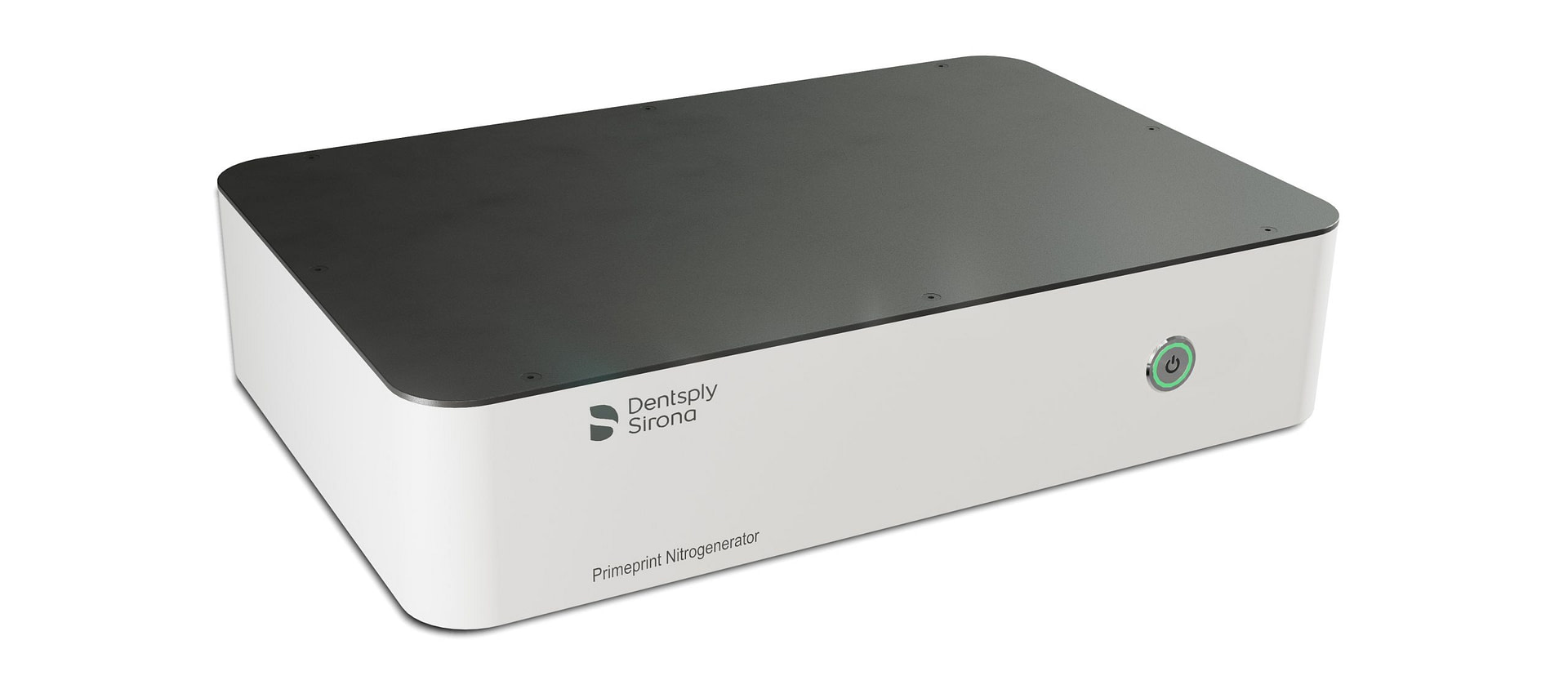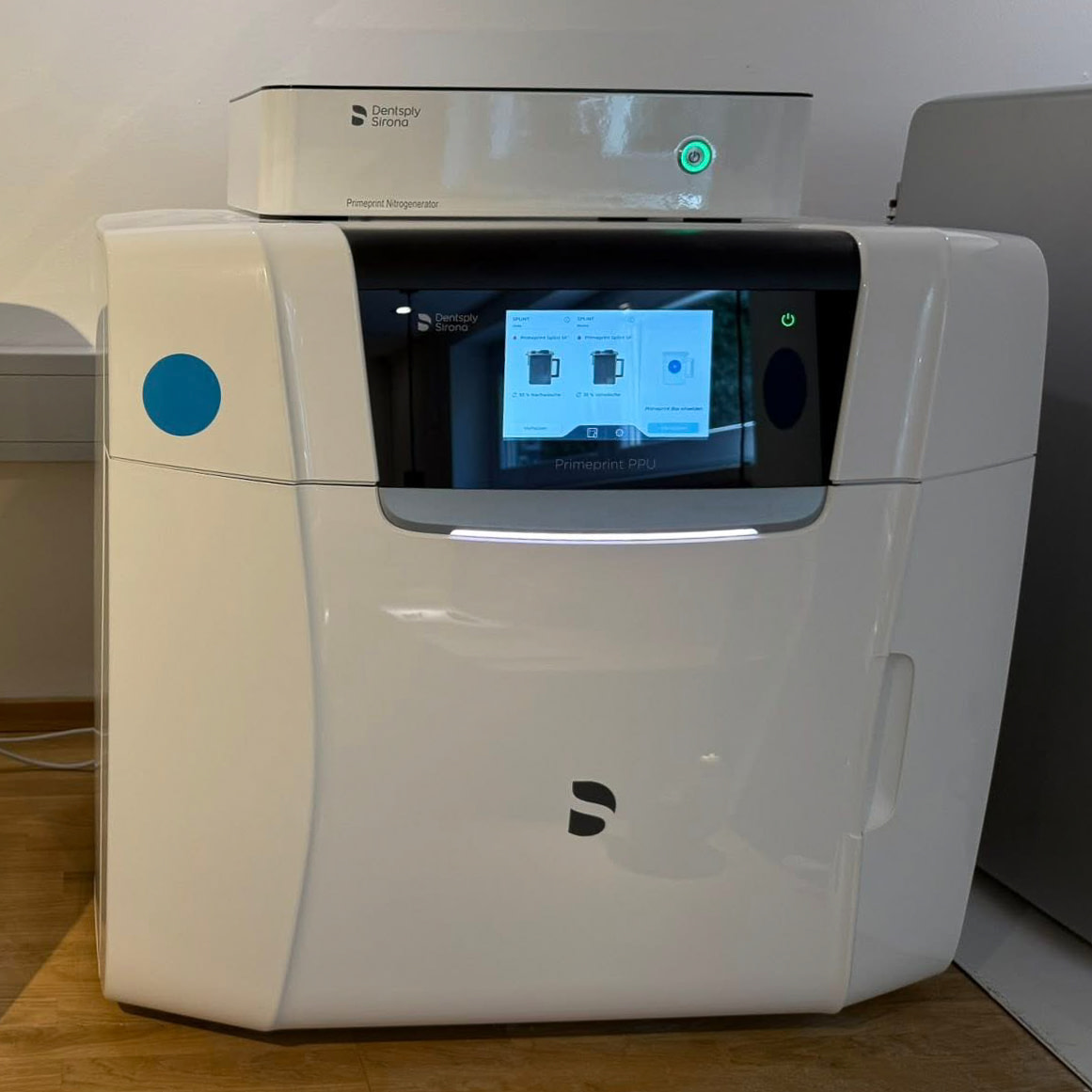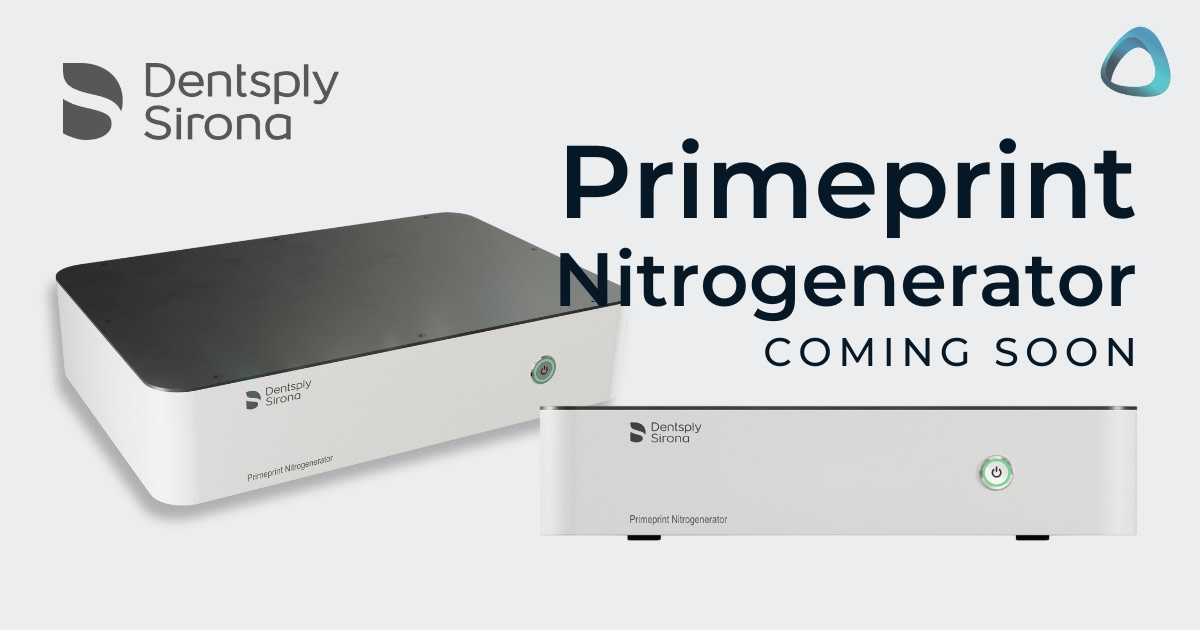In modern digital dentistry and 3D printing, the demand for precision, safety, and efficiency continues to grow.
One aspect that has been somewhat overlooked as we chased better resins and faster print times is the post-processing phase of 3D printed dental devices.
One of the most popular ways to prevent the oxygen inhibition layer forming on 3D printed parts that are cured is by flushing the chamber with nitrogen gas. This is what the Primeprint Post Processing Unit (PPU) uses and a few other printing solutions.
It is a relatively simple concept - nitrogen is used to displace atmospheric oxygen to prevent a tacky surface on your printed parts. This displacement can also result in enhanced aesthetics and mechanical properties depending on the resin chemistry.
The downside with this, is that you have to order these giant nitrogen tanks into your practice, which from personal experience, is really annoying and not exactly fit for purpose in a dental practice.
This is where nitrogen generators have become a thing in dentistry. We first heard about these from Ackuretta and now Dentsply Sirona’s upcoming Primeprint Nitrogenerator.
Launching in June 2025, it is is designed to address key challenges related to biocompatibility, manual gas bottle handling, and cost in the post-curing process.

What Is the Primeprint Nitrogenerator?
The Primeprint Nitrogenerator is an optional plug-and-play device that integrates with the Primeprint PPU
Instead of relying on external nitrogen gas bottles, the generator extracts nitrogen from compressed air (6–9 bar, >35 L/min) and delivers it into the curing chamber.
All components—hoses, adapters, filter, and power plug—are included, and installation is designed to be simple and self-contained.

Picture courtesy of Hendrik Zellerhoff
Installation and Workflow Integration
Once connected to a compressed air source, the Primeprint Nitrogenerator can begin separating and storing nitrogen.
The LED indicates operation (orange) and readiness (green). The integration into inLab CAM 24.1 allows the system to recognize and manage the nitrogen generator directly from the PPU interface.
Availability and Pricing
- Shipping (CE-approved markets): Starting end of May 2025
- US/Canada approval: Expected early June
- Australia/New Zealand: Targeting June 2025
Price: €3,490 (Europe) / $3,890 (US)
Why Cure 3D Printed Resin in a Nitrogen Atmosphere?
The Problem With Oxygen Inhibition
During the post-curing phase of photopolymer resins, exposure to ambient air introduces oxygen inhibition - a phenomenon where oxygen reacts with free radicals on the surface, preventing full polymerization. This leads to:
- Sticky or tacky surfaces
- Compromised surface hardness
- Reduced biocompatibility
- Potentially increased bacterial adhesion
This is especially critical for Class II medical devices and intraoral appliances that require contact with mucosa or teeth.
How Nitrogen Solves It
Nitrogen curing replaces oxygen with an inert atmosphere.
Without oxygen to interfere, the polymerization process completes fully at the surface level, delivering:
- Smooth, non-tacky surfaces
- Improved surface mechanical properties
- Enhanced biocompatibility
- Longer lifespan of printed appliances
- Cleaner handling for dental staff and labs
These benefits are most significant for resins used in restorations, splints, night guards, denture bases, and surgical guides -especially when they are marketed as biocompatible and certified for intraoral use.
There’s a notable divide in the industry right now when it comes to nitrogen-assisted post-curing. Some companies are for it, while others say it is not necessary and you can simply use special high powered curing boxes or simply just cure under glycerin or water to achieve the same affect.
Conclusion
While nitrogen curing isn't always essential for every printed part (e.g models), it has clear benefits in clinical dentistry - especially for devices that contact soft tissue or require optimal finish and safety.
The Primeprint Nitrogenerator brings these benefits into daily workflows in a much better way than before for Primeprint users. This is without a doubt the way forward for anyone considering a Primeprint + PPU. Storing nitrogen tanks is a pain and it this solution is much better in everyway.
It does come at a hefty cost however - close to 4000 USD which is a decent amount of money in today's 3D printing market.
It will be interesting to see how this discussion around nitrogen curing develops. Some deny the need for nitrogen. And yes, for some indications, like models, you do not need nitrogen because it is not a medical device, but the surface can be sticky, and you have to consider that you will be touching these models and uncured resin.
The other consideration is that in the case of splints, it is often argued that they are all polished anyway, removing this uncured layer. This is theoretically correct, but in practice, the inside of the splint is not polished, and what happens then?
Regardless, I think it is going to be more critical for us as clinicians and techs to control the oxyhibition inhibition layer in our 3D prints.
Leave your thoughts below! Thanks for reading.

